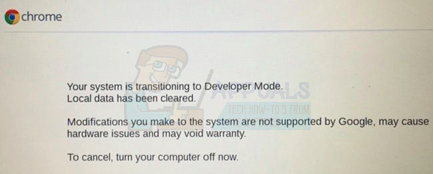How to Install ubuntu on Chromebooks
The popularity of Chromebooks has been steadily climbing, primarily due to their affordable pricing, comprehensive app ecosystem, and user-friendly, Linux-driven Chrome OS. These features make using a computer significantly easier than using their Windows and Mac counterparts—not to mention, they’re free! Some users may wish to install a full Linux OS, such as Ubuntu. In this article, we’re going to guide you on how to install Ubuntu on your Chromebook with the help of Crouton (Chromium OS Universal Chroot Environment). This easy-to-use chroot generator currently supports both Ubuntu and Debian. Once we’re done, you’ll be able to switch between your two operating systems without even having to restart your Chromebook!
What you’ll need:
-A USB drive (at least 4GB).
-Internet
-Your Chromebook.
We’ll start by backing up your data. Since most of your data is synced to your Google account, you’ll only need to make a backup of your ‘Download‘ folder. Once you’re done, it’s probably best to make a backup of your ChromeOS on your USB. This is just a security measure in case something goes wrong during the installation. Go to the Chrome Web Store and install the Chromebook recovery utility. After it installs, enter the model number of your Chromebook, insert the USB drive, and follow the instructions.

Once it’s done, unplug your USB. To download a different OS, you will need to put your Chromebook into developer mode. There are two methods to do this. If you are using an older Chromebook, there should be a physical button to enable developer mode. Search for the location of that button for your model and press it. If you are using a newer Chromebook, you will need to press a combination of keys. Press the Esc + Refresh keys, then push the power button. This will lead you to a recovery screen. Allow it to erase your data. This process can take up to 15 minutes, but there’s no need to worry; just let it reboot. Keep in mind that you will see this screen every time you boot up until you disable developer mode. However, your data will not be erased each time. You can press Ctrl + D to reboot quickly into Chrome OS.”

After you chromebook reboots, open your chromebook and go to this link , this will download Crouton to your chromebook, next open the terminal by hitting Alt+Ctrl+t , and type “shell” and press enter, now to install ubuntu you will need to type this into your shell
This will download Ubuntu for you. The duration might vary depending on your broadband speed and could take anywhere from a few minutes to a while. Once the installation finishes, Crouton will prompt you to enter your username and password. These will be used to perform administrative tasks. Now, you can run Plasma by typing in your command shell: sudo startkde.

This Ubuntu installation is a minimal one and won’t come with many applications. However, you can easily install any application, such as Chrome browser or VLC, using your command line. If you’re unsure of how to do this, you can search on Google for the command line script of your desired program. For example, this is how you would do it for Chrome.
You can now switch between Chrome OS and your Ubuntu installation. Use Alt+Ctrl+Shift+Back to go to Chrome OS, and the same combination but with ‘Front‘ instead of ‘Back‘ to return to Ubuntu from Chrome. When you log out of KDE, you can start another session by typing ‘sudo startkde’ into your command prompt.
If you’ve decided that Ubuntu isn’t your style and you want to revert to your verified ChromeOS, then press your space bar while booting. On older Chromebooks, you’ll need to flip back the physical switch, and Chrome OS will restore to the verified state. You can use your USB backup anytime if anything goes wrong.


